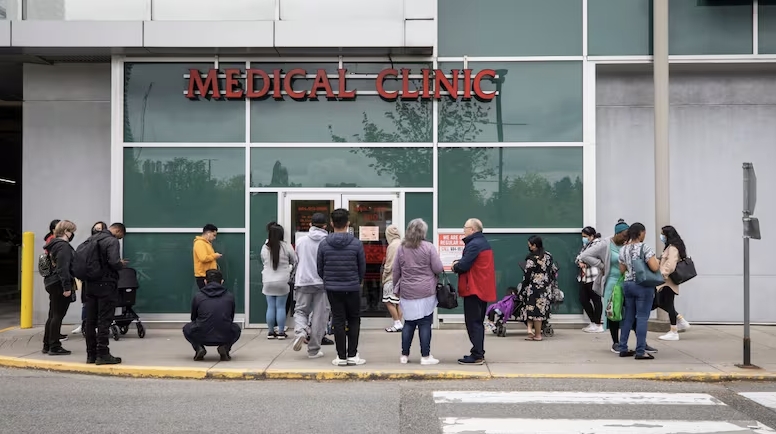B.C. Has Hired 1,000 New Family Doctors — But 400,000 People Still Don’t Have One
Noah Chen
3/21/20253 min read


When Jennie Passche wakes up in the morning feeling unwell, she knows she’s in for a race.
Living in Esquimalt on Vancouver Island, Passche has no family doctor — so her only option is to try her luck calling the local urgent and primary care centre, which was meant to offer same-day access for people like her.
“It just seems so hopeless,” she told CBC’s BC Today. “What’s going to happen to me? Who am I going to see?”
Passche was one of many callers who shared their struggles with accessing basic health care — even as the province marked a milestone: 1,001 new family doctors recruited since 2022 and 250,000 patients now linked to some form of regular care.
But the lines on CBC were flooded with people still searching for help — some who haven’t seen a doctor in years, others who are forced to rely on walk-in clinics or urgent care.
“We hear stories about people with delayed cancer diagnoses,” said Dr. Tahmeena Ali, former president of B.C. Family Doctors. “They’re bounced from walk-in to walk-in. It’s heartbreaking — and it’s not rare.”
400,000 Still Waiting
Despite the hiring push, the Ministry of Health says roughly 400,000 British Columbians are still without a primary care provider. Based on typical patient ratios, that means the province would need to hire over 4,000 more family doctors to meet the current demand.
“That’s simply not possible,” Ali said. “We need to rethink our system entirely.”
Instead of trying to assign a doctor to every person, Ali advocates for a team-based care model, where family doctors work alongside nurse practitioners, pharmacists, mental health professionals and dietitians. She says this is the only way to provide sustainable care in a system that’s stretched far beyond capacity.
Care by Geography
The Ministry of Health says it’s been moving in that direction, noting reforms that began in 2018 — including expanding primary care networks, urgent and primary care centres (UPCCs), and empowering nurse practitioners to see more patients.
It says new data on how these changes affect care demand will be available in the coming months.
But Ali warns that access to care is deeply unequal depending on where you live.
“If you’re in a community with a strong care network, you’ve hit the jackpot,” she said. “But if you’re not — you’re left in the dark.”
Mixed Reviews for Urgent Care Centres
Even patients who’ve been “attached” to providers say the system isn’t working the way it should.
Chris Adamache of Saanich says his family now has access to a nurse practitioner, but wait times are still two to three weeks, which forces them back to walk-in clinics when someone gets sick.
“Whatever ailment we have is long gone by the time the appointment comes,” he said.
And for others, the UPCC model simply isn’t functioning.
Bob Williams in Kamloops described the urgent care process as a dead end:
“They should rename it ‘possible care,’ because you just can’t get through,” he said.
But for some, the system works — at least occasionally. Mike Ranfft, 69, also from Saanich, said UPCCs were a lifeline after his surgery.
“I’ve seen different doctors every time, but they’ve all read the notes and been professional,” he said.
‘Roads Built for Horses and Buggies’
Dr. Ali says the current health-care system is trying to serve a modern population with an outdated model.
“We’re driving on roads that were built for horses and buggies,” she said. “The idea that every person can have their own family doctor in a system this strained just isn’t realistic anymore.”
Instead, she’s calling for long-term investment in coordinated, collaborative care, and a realistic acknowledgment that B.C.’s health crisis won’t be solved overnight.
“It took us years to get here,” she said. “It’ll take years to dig out.”
News
Stay updated with the latest BC news stories, subscribe to our newsletter today.
SUBSCRIBE
© 2025 Innovatory Labs Inc.. All rights reserved.
LINKS
